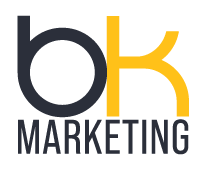
Beyond all the theories, case studies and complex jargon prevalent around the concept, what makes branding truly magical is best summed up by famous author Seth Godin’s words- Every interaction, in any form, is branding. There are no right or wrong answers here. Building your brand depends on an assortment of vital and identifiable criteria focusing on your business. Market share, loyalty and a truly unique differentiation to reach out to the right audience are some of the numerous benefits of good brand building.
Furthermore, so many B2B and B2C brands the world over are all serving as testaments to the same. We explore some of these success stories while answering a few important questions which business owners, brand managers and their teams must ask themselves.
What Are My Business Goals?
Creating a brand manifesto is ideally the foundation that the branding exercise should be built on. When you have this in place, it ensures that the organization’s goals and beliefs reach your desired audience, emotionally and effectively. Goals being as direct as driving sales or leading the way as an environmentally-friendly brand. Your business needs to have specific goals, summarised in the manifesto in a lucid tone. A solid set of business goals is best reflected in a strong brand strategy. Henceforth, Red Bull serves as a terrific example.
The energy drink may never stop reminding you how it gives you wings. But the business, in a larger sense, pushes its business goals, telling its audience stories. Encouraging them to test their limits through extreme sports and thrills. Moreover, this way Red Bull adheres to its manifesto while reminding the rest of the world the brand’s purpose and goals.
Given how creating a brand manifesto is essentially all about telling a great story, a good exercise would be to turn to copywriters. Using this as a way to articulate your business’ goals and values to make them adaptable across mediums and target segments. Creativity should ideally meet strategy, and the exercise should assist in proving how your business can help improve people’s lives.
What Is My Brand’s Purpose?
Identifying and sustaining your brand’s ‘why’ helps propel your brand manifesto one step ahead. This exercise aids a great deal with insight mining, and for good reason, can be quite challenging. Let your audience know why they should care about you. Take a step back and reflect what problems your business was trying to solve in the first place. A pertinent example here would be Dove. While the business has enjoyed a sizeable global market share for many years since its inception, the brand’s purpose has made it a lot more relatable to its consumers around the world.
Dove has always epitomised self-esteem among girls worldwide. The brand’s online campaigns like #SpeakBeautiful resonate with their audience to help gain confidence by using social media to spread positive things about themselves. The brand’s purpose here does not directly hint at skyrocketing sales, but ensures a long-term loyalty among its target segments.
Who Is My Target Audience?
There are perhaps very few brands which have enjoyed success as much as Nike has. Especially, when it comes to effective target audience identification and segmentation. Their CEO Mark Parker was once quoted to have said: “Everything we do starts with the customer. It is our obsession that starts with serving the customer that sharpens our focus and drives our growth.” With categories like women, young athletes and runners, Nike has been in the forefront of product innovation and suitable brand building. In this case, while women in their 20s and 30s have exhibited an ‘athleisure’ trend. Wearing leggings to the gym as well as brunch, young boys and girls who play sport are spoilt for choice when it comes to admiring athletes. Drawing from such insights, Nike has products for both categories.
Additionally signing up with athletes and professional sport teams to reach out to their identified target audiences.
A good first step in identifying your business’ target audience would be to determine the needs your products fulfil. Demographic variables like age and buying power are useful criteria to consider. Drawing other psychographic and behavioural verticals can help shape a funnel approach in target audience profiling. Of course, sufficient observation, research and data-mining of your competitor’s target audience is never a bad idea – as long as it aids in carving suitably unique segments for your business to reach out to.
What Is My Brand Voice?
In an era where brands are increasingly becoming human while humans are striving to sound like brands, developing and building a brand voice has never looked this exciting. Consistency is key here. Especially considering how brands are quick to make their presence felt across a variety of online and offline mediums.
You don’t want your brand which rolls out quirky newspaper ads to have a sombre online persona. Something which unfortunately has very little to say to its target audience. Factors like etymology, sonic qualities of words you intend on using are all key. As well as, the overall syntax of your brand’s communication should be given serious thought while devising a brand voice.
For a brand over 130 years old, Coca Cola has been the most outstanding example of maintaining a brand voice. The brand has never failed to resonate with its consumers across generations and eras. With the aim of becoming the most optimistic brand on social media, the red and white hues of the world’s favourite soft drink have been put into great use graphically.
All adding to continuously lend the brand a truly global look and feel. Be it the Share a Coke or Open Happiness campaigns, Coca Cola continues to sound like a happy, positive and passionate brand. Continuing to make a difference in the world by the stories it shares via its marketing campaigns and communication.
Interested in learning more about brand building? Keep up to date with us here
- Categories: View All, Graphic & Digital Design
- By Karyn Harte
Get In Touch Today
Your email address will not be published.
Required fields are marked *





